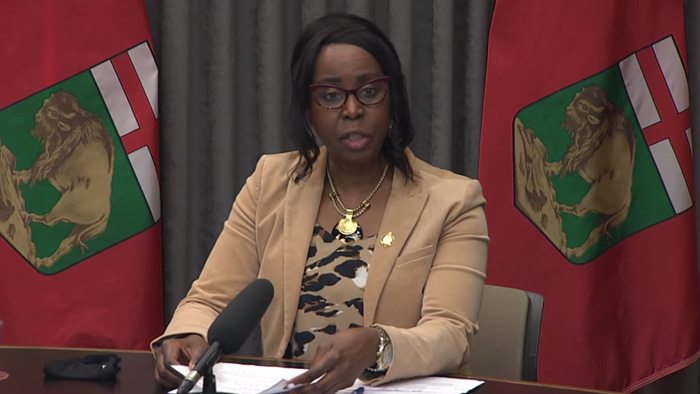The governments of Canada and Manitoba released a Virtual Care Action Plan, which outlines how Manitoba will use the $7 million federal investment through the Canada-Manitoba Virtual Care Agreement to develop and improve virtual health-care initiatives for Manitobans.
“Over the last two years, we have been able to use technology to advance many things, including access to health care. Through this initiative, we are ensuring that Manitobans will benefit from better access to care, leading to improved health outcomes,” said federal Health Minister Jean-Yves Duclos. “Our government will continue to support provinces and territories in the expansion of virtual care initiatives so as to improve health outcomes for all Canadians.”
“The Manitoba government is committed to strengthening our health-care system by bringing care closer to home,” said Manitoba Health Minister Audrey Gordon. “Investing in improvements to access to care and patient outcomes results in building a modernized system that addresses the challenges caused by the COVID-19 pandemic and responds to Manitoba’s unique population and geography.”
The Virtual Care Action Plan outlines investments in a number of areas, particularly technology systems used by health-care providers across the province. This includes a new project to measure, prioritize and schedule surgical procedures, with the goal of better managing and reducing wait times for patients. Once complete, this initiative will support the efforts of Manitoba’s Diagnostic and Surgical Recovery Task Force to more accurately measure, manage and reduce backlogs that have grown during the pandemic.
Investments are also supporting remote home monitoring to allow more patients to connect virtually with their health-care team on a regular basis. The remote home monitoring project builds on the success of the Virtual COVID Outpatient Program (VCOP), an initiative that supported the care and wellbeing of people with COVID-19 during their period of self-isolation. The VCOP successfully moved to a new, more sustainable and extendable platform last month, providing patients and their care teams with new monitoring tools, a fully integrated video conferencing solution and the ability to monitor multiple patients using a single dashboard.
Another initiative of the Virtual Care Action Plan builds on existing digital health systems in Manitoba and invests in increased use of virtual care (video conferencing) for mental health and primary care services. Funding under the action plan will provide patients and health-care providers with a consistent, safe and modern way of offering virtual care, particularly for residents of rural or northern regions who would otherwise have to travel outside of their communities. Tools that will be implemented for the video conferencing system may include more seamless integration with health-care provider point of care systems, improving workflow for clinicians by integrating with scheduling and other clinic processes.
Investments are also being made towards connectivity that will help ensure regional health authorities and other health system partners have the network and bandwidth resources needed to access various virtual care initiatives.
Projects under the action plan are being led by Shared Health and will align with Manitoba’s Clinical and Preventive Services Plan, a five-year plan with new approaches to health care designed to improve access, quality and patient outcomes for all Manitobans.
“Digital and virtual solutions are at the forefront of Manitoba’s Clinical and Preventive Services Plan,” said Dr. Chris Christodoulou, interim provincial lead of health system integration and quality, Shared Health. “Providing suitable alternatives in the appropriate clinical setting that will help to reduce the frequency for rural and northern patients to travel long distances to receive care. Investing in digital enablers including remote home monitoring solutions will facilitate enhanced integration and delivery of patient care, support timely activation of in-person clinical assessments where appropriate, such that overall patient and family health-care experiences are improved.”


